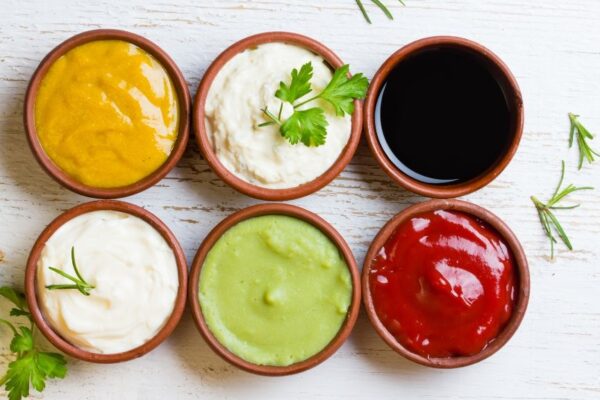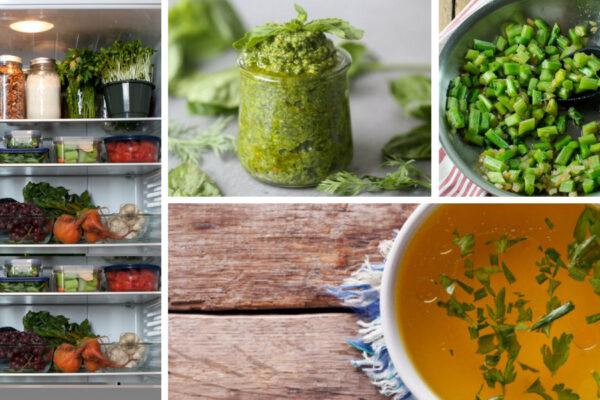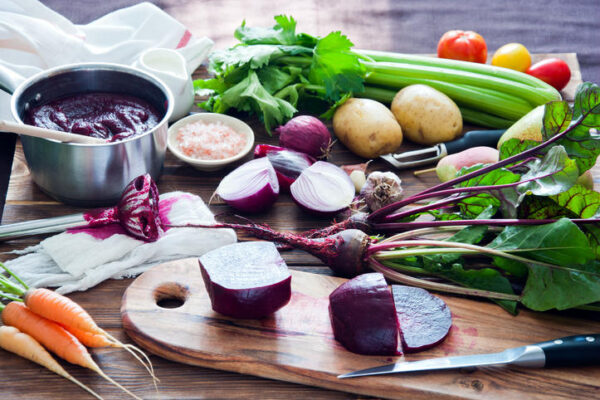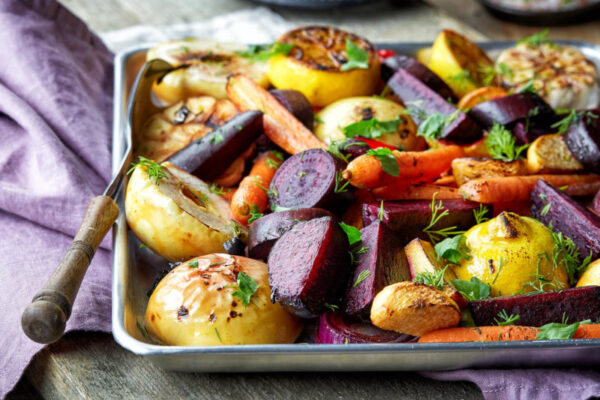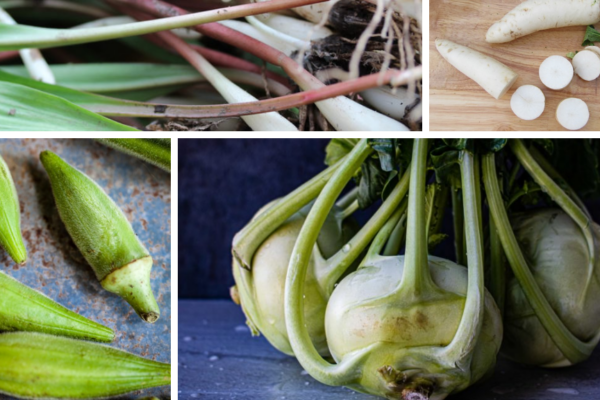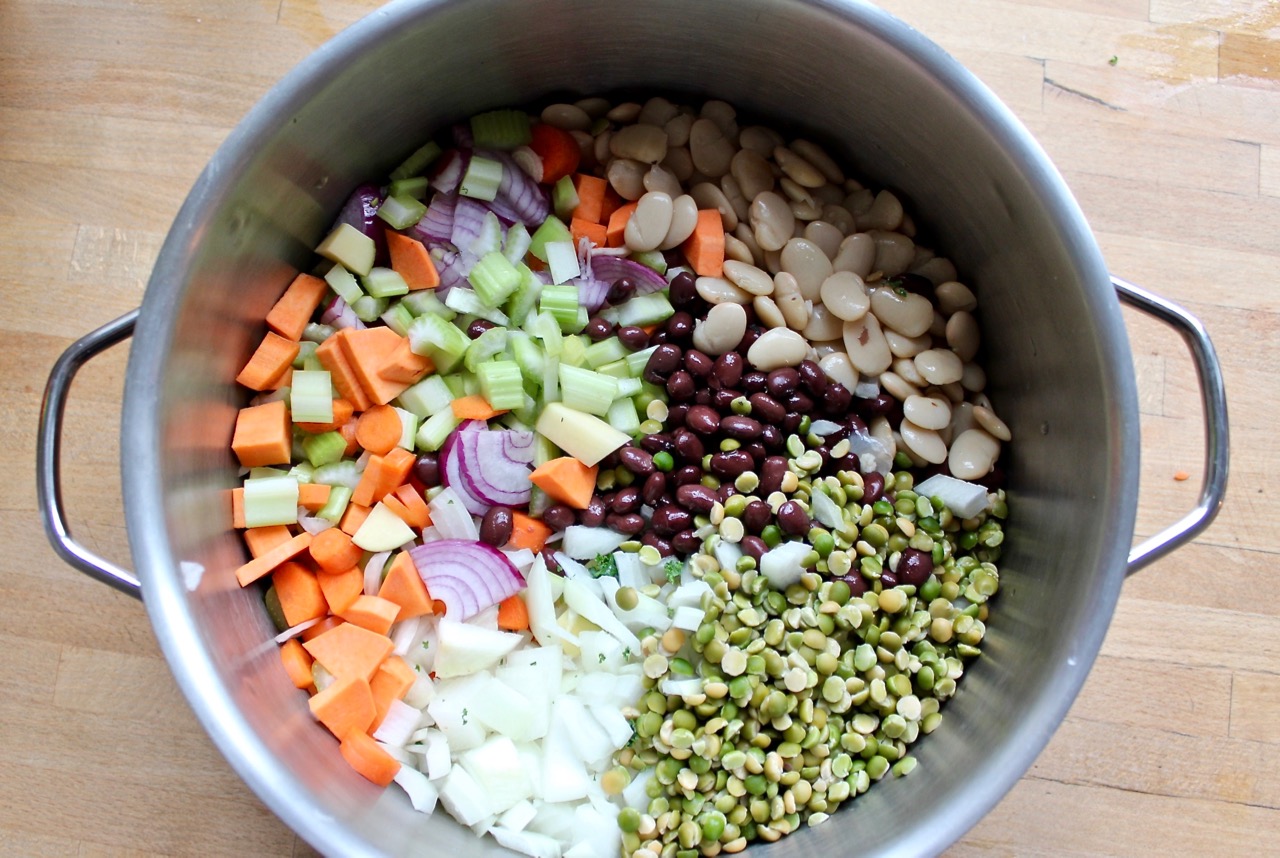Broths and Stocks: A Culinary Nutrition Guide
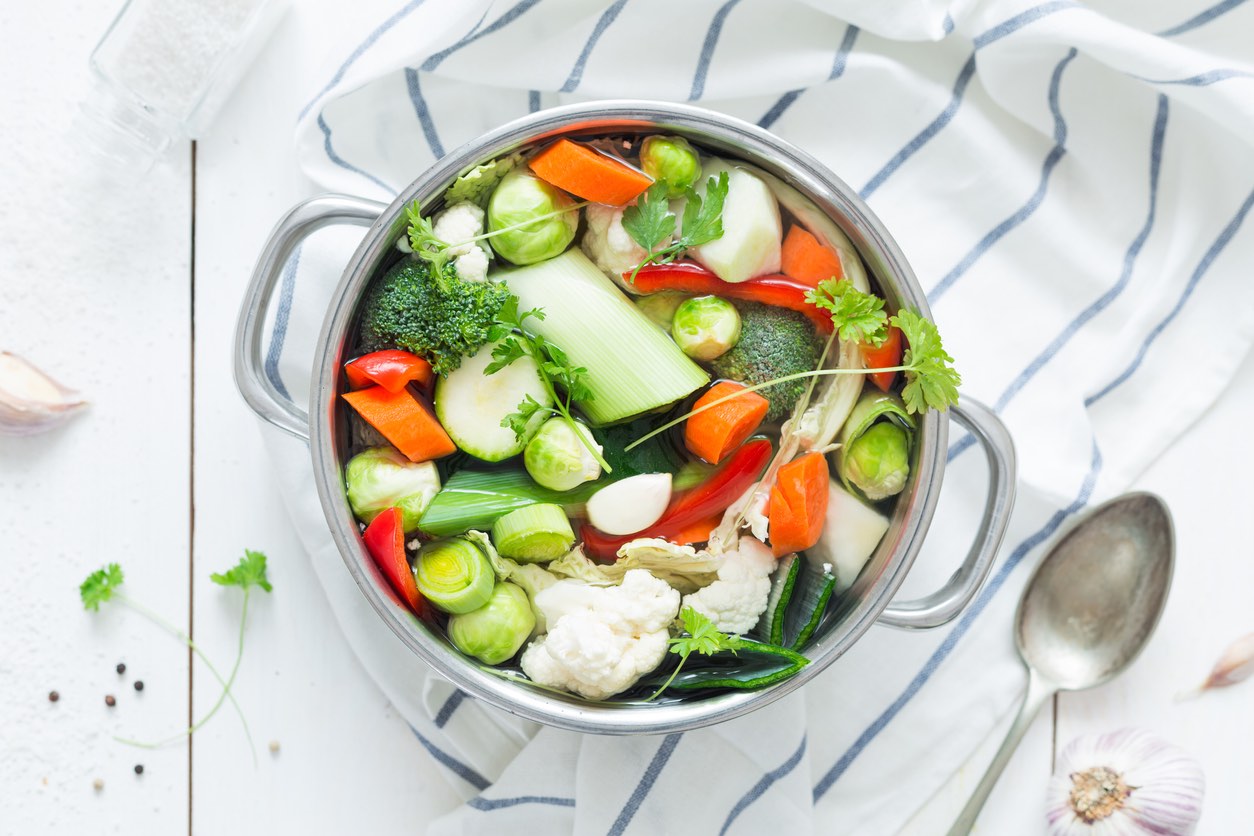
Broths and stocks are staples in kitchens in many parts of the world because they provide an abundance of flavour and nutrition to a variety of dishes, including soups, stews, one-pot meals, sauces and more. We consider them an essential recipe to master because of their versatility and reliability in cooking.
Broths and stocks can be as simple or as complex as you’d like them to be. In this Culinary Nutrition Guide to broths and stocks, you’ll learn everything you need to make, use and store a nourishing batch of broth every time.
What’s the Difference Between Broths and Stocks?
The terms ‘broth’ and ‘stock’ are typically used interchangeably. In our experience, it doesn’t make much difference in recipes if you use either a broth or a stock; however, from a culinary/chef perspective there are some key differences.
Broth
- Made using meat (no bones) and/or vegetables
- Simmered for a shorter amount of time
- Thin consistency
- Seasoned with herbs and spices
Stock
- Prepared with animal bones (bones are sometimes roasted first for more flavour)
- Simmered for longer periods of time
- Often unseasoned or salt-free
- Thick consistency, due to the gelatin from the bones
You may have also heard of bone broth, which has become very popular in recent years. Bone broth, because it has bones, is technically a stock but the term ‘bone broth’ seems to be more commonly used than ‘bone stock’. Confused? That’s why we like using broth and stock interchangeably, which works for most of us everyday cooks – not as restaurant chefs. But hey, even the award-winning James Beard says broths, stocks and bouillon are all the same. If he’s OK with using the terms interchangeably, so are we!
Culinary Nutrition Benefits of Broths and Stocks
Broths and stocks are:
- Simple to digest and comforting
- Great for boosting the immune system
- Hydrating
- Delicious in a variety of recipes
- Easy to enhance with more nutrition by adding vegetables, herbs, spices, sea vegetables, medicinal mushrooms and culinary adaptogens
- Rich in vitamins, minerals, antioxidants and anti-inflammatory nutrients
Additional Benefits of Broth
- If using meat, meat-based broth is rich in protein for repairing tissues, boosting immunity, bolstering energy and hormone balance – and contain health-building fats that support cell membranes, joint health and the brain
- Quicker cooking than stocks
Additional Benefits of Stock
The bones used in stock are rich in:
- Minerals
- Gelatin for digestion, bone and joint health, and skin health (the gelatin also helps the stock thicken up and ‘gel’)
- Chondroitin, glucosamine and collagen for bone, joint and skin health
No matter which option you choose to make, you’re going to end up with a beneficial pot of nutrition!
Get your FREE Batch Cooking Guide plus 35 more free resources!
Fill out the form below for instant access.
Free Resource Library
Enjoy more than 40 downloadable guides, recipes, and resources.
Why Make Your Own Broths and Stocks?

The foundation of the Culinary Nutrition Expert Program is making food from scratch as much as possible – not because we want to make life difficult or time-consuming, but so students feel empowered to cook the best food for themselves and their families. Homemade broths and stocks:
- Allow you to control exactly what goes into your pot
- Are often less expensive than many store-bought products, because you can make a much larger portion at home
- Contain simple ingredients
- Do not include processed or artificial flavour enhancers (such as chicken ‘flavour’, MSG/yeast extract), poor quality oils, excess salt (or low quality salt)
- Can be cooked in large batches and stored in the freezer for ease and convenience
- Can be given a nutrition boost with extra ingredients (see below ‘How to Boost Nutrition of Broths and Stocks’)
- Reduces packaging and are low-waste
Best Equipment for Making Broths and Stocks
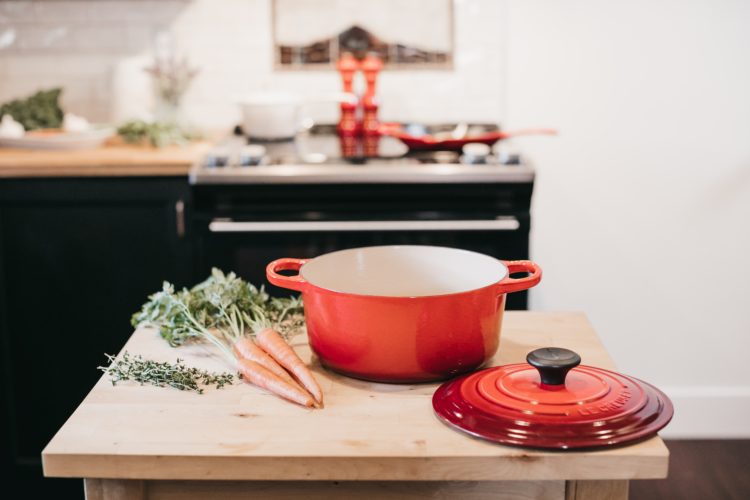
What you need to make broth and stock is fairly simple:
- Large pot
- Fine-mesh strainer or cheesecloth
- Large bowl to strain broth/stock into
- Storage containers for finished broths and stocks
- Cutting board and knife, if prepping additional vegetables or herbs
If you don’t want to be standing over the stove or constantly checking on your broth or stock, an appliance like a slow cooker or Instant Pot can be very helpful – an Instant Pot can also cut down on cooking time significantly.
How to Make Stock: Basic Recipe
This bone broth recipe is very flexible. You can alter the bone-to-water ratio (more bones will yield a thicker stock, or you can use less water for a more intense flavour).
Ingredients
- 1-3 lbs bones (chicken, beef, turkey, fish, etc.)
- Water, enough to cover the bones
- Any nutrition upgrades (see choices below)
Instructions: Pot on the Stove or Slow Cooker
If you’d like to roast the bones first (optional):
- Follow Step #1 below.
- Drain and dry the bones.
- Spread the bones out on a baking sheet.
- Roast the bones at 400 degrees for 15-20 minutes.
- Proceed with Step #2.
- Add bones and water into the pot and cover with water. Bring to a boil and cook for 10 minutes. Drain the bones and clean any scum from the pot.
- Add the bones and any nutrition upgrades to the pot on the stove or the slow cooker. Cover with fresh water.
- If using the stovetop, bring to a boil then lower the heat. Cover and cook for a minimum of 2 hours. The longer you cook, the more flavourful and nutrient dense the stock will be.
- If using the slow cooker, cook on a low setting for a minimum of 8 hours and a maximum of 24 hours.
- Allow the stock to cool, until it can be handled easily without burning yourself.
- Place the strainer over a larger bowl. Pour the stock into the strainer and discard the solids.
- Store the broth in the fridge or freezer to use for later (see ‘Storing Broths and Stocks’ below).
Instructions: Instant Pot
- Add bones, water, and any nutrition upgrades to the Instant Pot. Cover and set to ‘sealing’.
- Cook for 30-60 minutes.
- Allow stock to cool, until it can be handled easily (be careful – the Instant Pot gets very hot and takes longer to cool than the stovetop or slow cooker).
- Place the strainer over a large bowl. Pour the stock into the strainer and discard the solids.
- Store the broth in the fridge or freezer to use for later (see ‘Storing Broths and Stocks’ below).
How To Boost Nutrition of Broths and Stocks

Enhance your broths and stocks by adding extra ingredients. Don’t add all of these at once – pick four or so to start and go from there, especially if you are unfamiliar with using some of these ingredients.
Onions and Garlic
Health Benefits: Anti-viral and anti-bacterial, boost the immune system, anti-inflammatory.
Flavour Profile: Depending on the type of onions and garlic you use, they can be very pungent, bitter or spicy. Some onions like shallot or green onion have a milder flavour.
Ginger
Health Benefits: Anti-inflammatory, immune-boosting and good for digestion and nausea.
Flavour Profile: Spicy
Turmeric
Health Benefits: Anti-inflammatory, reduces pain, rich in antioxidants and cancer-fighting nutrients.
Flavour Profile: Bitter and spicy.
Maca
Health Benefits: Relieves stress, boosts energy levels, balances hormones. and increases sex drive.
Flavour Profile: Malt-like
Goji Berries
Health Benefits: Antioxidant-rich (including Vitamin C), high in amino acids for healing and repair, beta-carotene for eye health and immunity.
Flavour Profile: Slightly sweet, but they work surprisingly well in savory broths.
Apple Cider Vinegar
Health Benefits: Improves digestion and boosts immunity, and helps to draw nutrients out of bones.
Flavour Profile: Sour
Medicinal Mushrooms
Health Benefits: Immune-boosting and modulating, anti-cancer, rich in vitamins and minerals like iron, copper, Vitamin D, B vitamins and selenium.
Flavour Profile: Umami, earthy, meaty.
Sea Vegetables
Health Benefits: Rich in iodine for hormonal and thyroid health, high in protein and B vitamins, contain chlorophyll to nourish cells, immune-boosting and cancer-fighting.
Flavour Profile: Each variety will taste different – they all taste faintly ‘of the sea’, but also have a rich, umami and slightly salty flavour.
Parsley
Health Benefits: Rich in antioxidants, detoxifying.
Flavour Profile: Mildly bitter.
Dill
Health Benefits: Anti-bacterial, rich in calcium for bone health, helps to neutralize carcinogens.
Flavour Profile: Slightly sweet, tangy.
Carrots and Celery
Health Benefits: Carrots are rich in Vitamin A, which helps with immunity, inflammation and tissue healing. Celery is high in minerals like potassium, folate and sodium.
Flavour Profile: Sweet, mild.
Root Vegetables
Health Benefits: Anti-inflammatory, immune-boosting and good for reducing PMS symptoms.
Flavour Profile: Most root vegetables are sweet and starchy.
To Be Added After Cooking
Add these more delicate ingredients into your broth just before enjoying.
Dark Leafy Greens
Health Benefits: B vitamins for energy levels and managing stress, rich in fibre for good digestion, contain minerals like calcium and Vitamin K for bone health, have anti-inflammatory omega-3 fats, anti-cancer properties.
Flavour Profile: Depending on the green, the flavour ranges from mild to strong and bitter.
Sprouts
Health Benefits: Contain easy-to-digest amino acids and simple sugars, rich in enzymes, are anti-inflammatory and immune-boosting, inexpensive to make at home.
Flavour Profile: Depending on the sprout you choose, the flavour ranges from mild to bitter.
Fresh Herbs
Add more fresh herbs at the end for extra flavour and nutrition – for example, parsley, dill, oregano, thyme, mint, basil or any other herb that complements your broth.
Low-Waste Broths or Stocks
When you are meal prepping, batch cooking or simply making a quick meal, save odds and ends of vegetables in a container in the freezer. Then, when you have a full bag, add them to your broths and stocks – or use them to make vegetable-only stock. More low waste/zero waste tips can be found here.
How to Use Broths in Recipes

There are many uses for homemade broths and stocks! Use them in:
- Soups
- Stews
- Sauces and gravies
- Casseroles
- Marinades
- Cauliflower rice
- Gluten-free grains (use the stock to cook the grains)
- Mashed sweet potatoes, or other mashes and purées with vegetables
- Noodle dishes
- Risotto
Or just sip it alone in a mug!
Storing Stocks and Broths
Store your broth in an airtight container in the fridge if you are going to use it soon. Keep in the fridge for 4-5 days maximum. We like using glass or stainless steel for storage.
If you are batch cooking broth and freezing it, ensure you leave at least 1 inch of headspace at the top of the jar to account for expansion. Store in containers of various sizes (500ml, 1 litre, 2 litre) for a variety of recipes and also freeze some in ice cube trays for quick additions to sauces or other dishes.
Cooking your own broths and stocks is a very straightforward process, and you can keep them plain or adjust the flavour profiles as you see fit. What are you waiting for – grab a pot and get going!
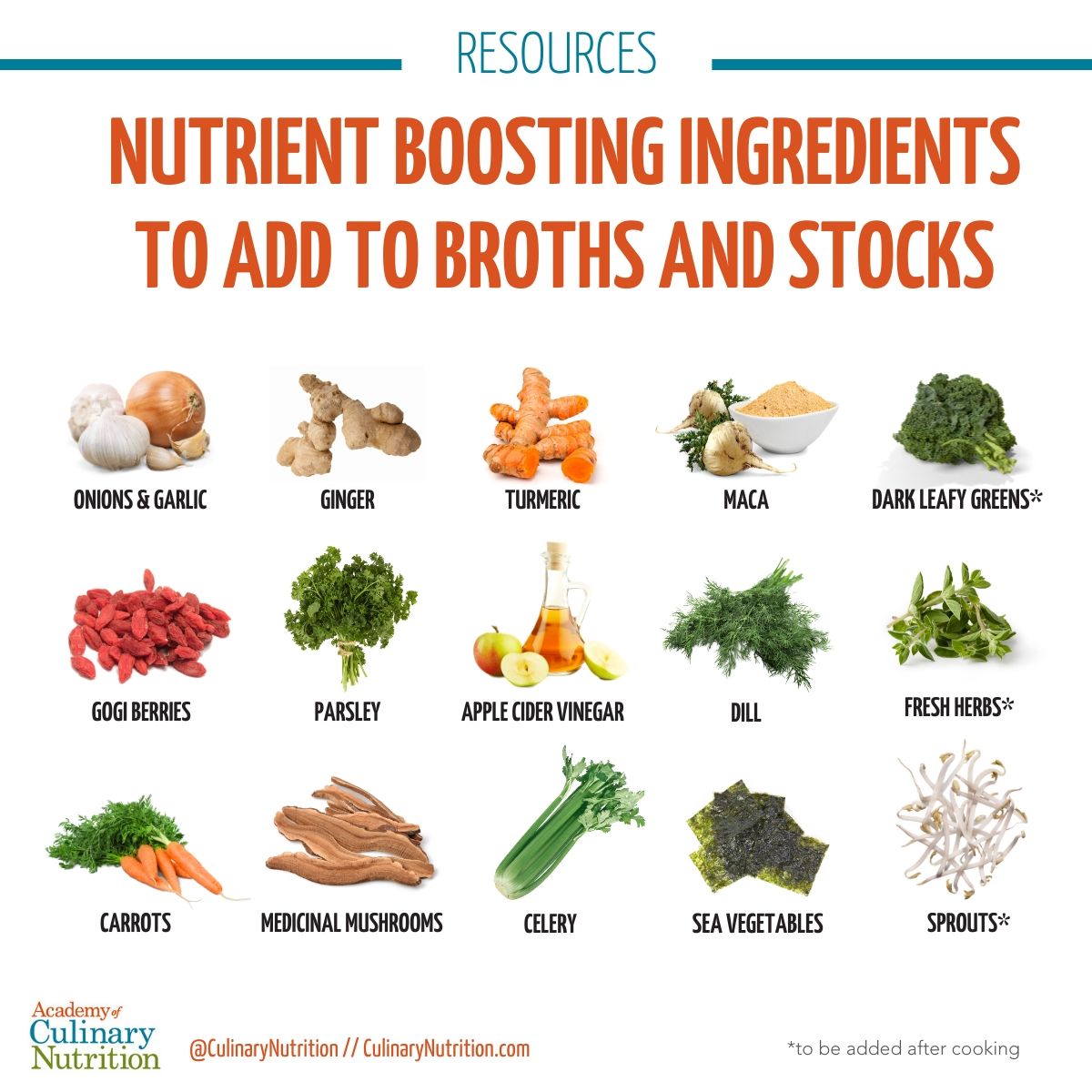
Image: iStock/Cleardesign1
Free Resource Library
Enjoy more than 40 downloadable guides, recipes, and resources.















